All about chokeberry and its cultivation
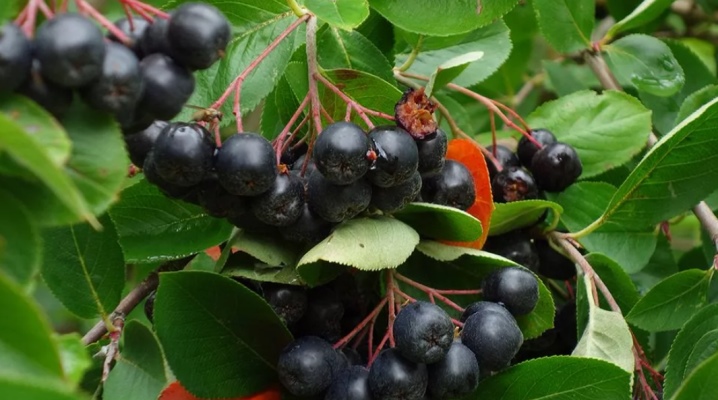
Chokeberry is a fruit tree or very powerful shrub that comes from the rose family. The culture is grown for different purposes. It is suitable both for obtaining useful products and as a decorative component. From this article you will learn all the most interesting about chokeberry, as well as about the features of its cultivation.
general description
Chokeberry is a deciduous shrub or fruit tree. The height of the shrub is usually about 3 meters. The roots of the culture go into the ground to a relatively shallow depth. The root system of the chokeberry differs in that it has many small branches.
A mature plant can have a lush crown, reaching 3 meters in diameter. The culture boasts a very high decorativeness of both fruits and leaf plates. In particular, the autumn foliage of rowan looks beautiful and elegant. She draws attention to herself with a combination of purple, red and red colors. The flowers of the blackberry are bright white and fragrant. They gather in corymbose inflorescences. They can include more than 20 flowers.
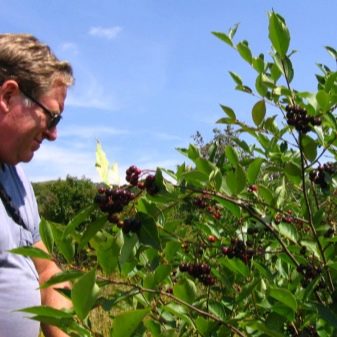

Chokeberry is also called black chokeberry. While the plant is still very young, its crown has a compact and compressed structure. This component is spreading only in adulthood. Beautiful leaf blades of the culture in question can reach marks of 2.5-7 or 2.5-3.5 cm.
Chokeberry finger grains are three-grooved pore. Slightly less common are four-furrow elements. In addition, the grains are characterized by a spherical-flattened shape.
The berries of the culture have a neat spherical structure, they are distinguished by good decorativeness. Most often, the color of the fruit is black, but it can also have a black-purple tint. The surface of the berries shows a beautiful shine and bluish bloom. The diameter of the berries is usually 6 to 8 mm. They can be eaten. Rowan has a sweet-sour taste and aroma, as well as a tart and slightly astringent aftertaste.
The blackberry can bear fruit only from the 4th year of its development. Berries ripen towards the end of September and may not fall off for a long time. It should be noted that chokeberry is a culture that is not afraid of frost. It grows especially well on moisture-intensive and fertile soils. In dry seasons, the fruits are less juicy and smaller.
The flowering of the considered useful-ornamental plant falls on the period from May to June. This stage in the life of a tree lasts for 10 days. The flowers are bisexual.
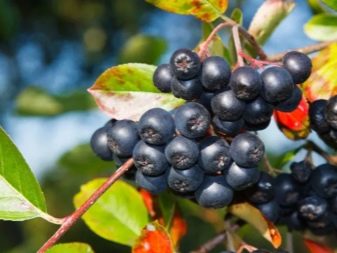

Popular varieties
Chokeberry is divided into several varieties, each of which can be easily identified by the appearance and structure of the bush. Let's take a closer look at the popular varietal branches of black chokeberry.
Nero
A variety that thrives especially well when grown in shaded areas. The culture can easily tolerate severe frosts. By itself, the Nero bush does not develop too large and voluminous. Its highest height rarely exceeds 2 meters. The flowers of the culture have an interesting and attractive color. They are snow-white, but the stamens are red.
Berries of the Nero variety are characterized by excellent taste. They are fragrant, contain many vitamins and minerals. From the fruits of the Nero bush, wonderful juices are obtained. The berries of the variety ripen a little earlier than in the case of other varieties.

Hugin
This name belongs to a popular variety of Swedish breeding. Hugin has very good frost resistance. In addition, the culture can boast of an excellent appearance, due to which it can serve as a decorative component of landscape design. It is not too difficult to take care of the plant, but you need to be as careful as possible with pruning.
Hugin's bushes usually grow up to 2 m. The leaf plates of the culture in the spring and summer become dark green, acquire an attractive shine. In the autumn season, the foliage becomes rich red. The variety under consideration is characterized by large-sized fruits with a black color and a glossy surface.
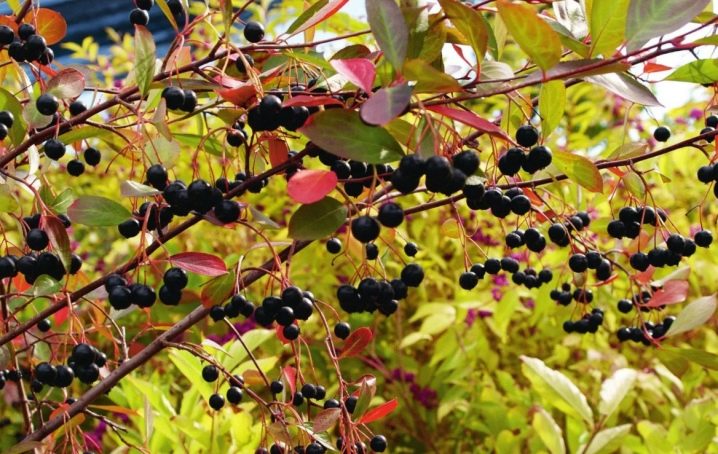
Viking
Viking is a high-yielding black chokeberry species. He, like Hugin, grows frost-resistant. Viking belongs to the Finnish selection. It has green and gleaming leaf plates and also produces the same shiny fruit. They are quite large in size.
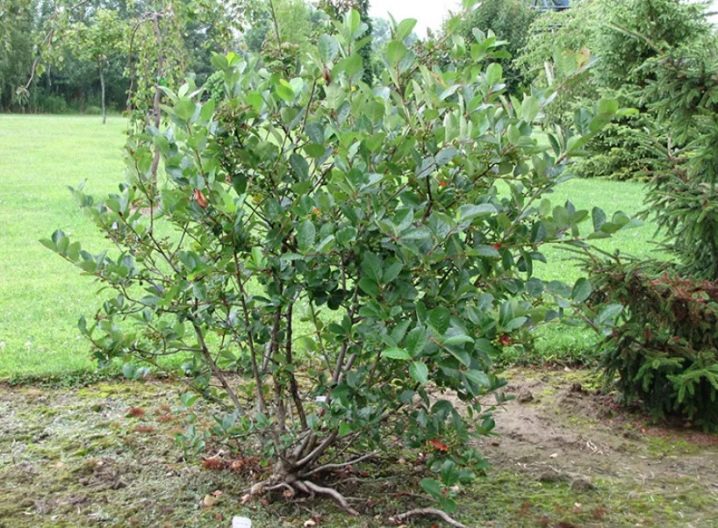
Black-eyed
If you want to grow an unpretentious blackberry variety on the territory, then the Black-eyed variety is best suited for this. This is a great option for many regions, including the Moscow region. The plant is resistant to many common diseases. It is rarely attacked by dangerous pests. The variety is frost-resistant, it is a very good honey plant. The diameter of the fruits of the Black-eyed variety usually reaches 1 cm. The tartness of the berries is much weaker here than in the case of all other varieties.
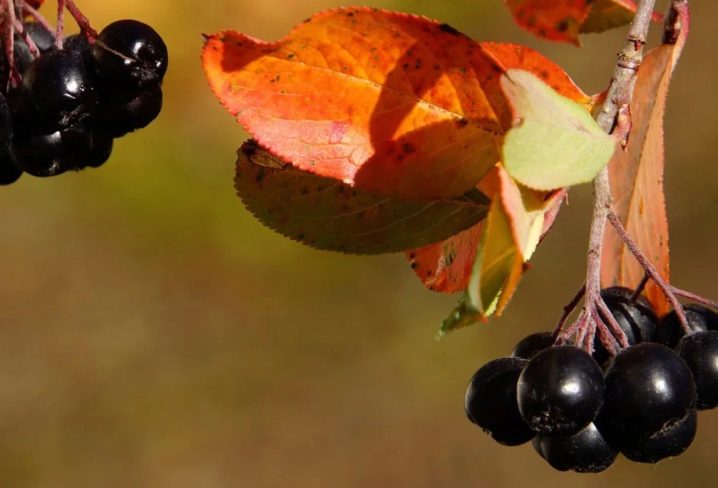
Landing
Aronia, like any other fruit tree, needs to be planted in accordance with many rules and nuances. Only if this condition is met can one expect that the culture will take root well in its place and will grow healthy, with strong immunity.
Let's figure out the main features of planting chokeberry.
-
First, you need to choose the optimal square on the site in order to plant the culture there. Fortunately, finding a comfortable place for the blackberry is not difficult, because almost all possible types of soil can be suitable for it. The only exceptions are those lands that are saline.
-
Chokeberry does not suffer from the close passage of waters in the soil layer. The thing is that the main percentage of its roots is located within the projection of the crown and at a depth of no more than 50 cm. That is why the close location of groundwater does not affect the culture in any way.
-
Be sure to leave a sufficient gap between the planted plants. It is desirable that it be at least 2 m. It is necessary to adhere to this rule so that subsequently the bushes do not begin to strongly shade each other. The size of the holes for planting should be about 60x60 cm.The optimum depth is 40-45 cm.
-
A soil mixture for planting black chokeberry can be purchased at a garden store, or you can prepare it yourself. To do this, you should take the upper soil layer, it is combined with 1-2 buckets of humus, compost or peat. These components are added 150 g of superphosphate, as well as 60-70 g of potassium sulfate.
-
The neck of the plant root will need to be deepened by about 1-1.5 cm. Immediately after the completion of planting operations, it is recommended to carefully trim the rowan seedlings. It is necessary to leave intact shoots 15-20 cm in height. In this case, from 4 to 5 kidneys should remain on them.

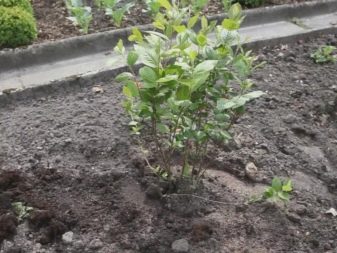
After planting the chokeberry in the ideal place for it, all that remains is to provide the culture with proper care. If you feed, water and carefully prune the plant in a timely manner, it will remain healthy and beautiful.
Care
The blackberry is relatively easy to plant. Taking care of a plant in a summer cottage is also not too difficult. The main thing is not to forget about watering and fertilizing, and also to be extremely careful in pruning.
Watering
Growing chokeberry in the open field involves mandatory and regular watering. Let's consider how to do it correctly.
-
In order for the chokeberry fruits to develop dense, juicy and tasty, the plant will need to be watered at the stage of berry formation. In addition, it is impossible to leave the bush without watering if it is a dry summer in the yard.
-
A rowan seedling must be watered after transplanting into open ground. At this stage, 1 bucket of water will be enough.
-
If the season turned out to be rich in rains, then the culture can not be watered at all. It should be remembered that the chokeberry needs only moderate watering. It is not necessary to flood the plant too much, as this will negatively affect the state of its health.
-
After moistening, the soil around the fruit tree must be gently loosened. In this case, you still need to get rid of all weeds.
For the first time, the soil mixture needs to be loosened in early spring, and then 4 to 5 loosening should be carried out during the summer season.
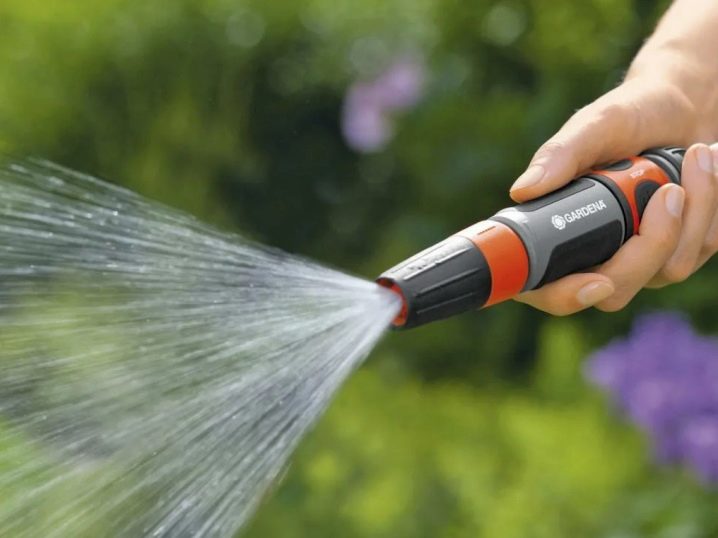
Top dressing
The fruit plant will need the right fertilizers. Let's find out how and when to apply fertilizer mixtures for chokeberry.
-
If the plant is not fed, then it will not bring a tasty harvest. Aronia require regular feeding. If the culture grows on soil enriched with all the necessary components, then it is enough to add 50 g of ammonium nitrate under each bush in the spring season. In addition, you will need to mulch the circle around the trunk with organic components - compost or humus.
-
If rowan is grown in depleted soil, then after spring dressing and at the very beginning of the summer season, you will need to pour 1 bucket of mullein under each of the bushes. The latter is diluted in water in a ratio of 1: 5.
-
In the autumn, when the harvest of berries has passed, 0.5 liters of ash from wood will need to be added under the blackberry bush, as well as superphosphate (100 g will be enough).
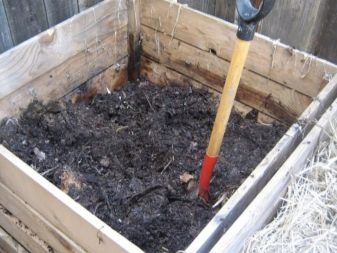

Pruning
The fruit bush in question is very important to properly prune. If this is not done, then the chokeberry will begin to grow in width, and also stretch upward. In this case, fruiting will go to the periphery, which is illuminated by the sun's rays. After that, a barren jungle will remain in the middle of the bush. To prevent this from happening, you need to control the number of branches, as well as the height of the bush. Chokeberry should be pruned in the spring.
-
First, the seedlings are cut in the spring at a height of 15 to 20 cm. After a year, only strong branches should be left. The shoots should be leveled in height, and the remnants of the shoots should be cut off at the base.
-
A year later, some more branches from the growth are added to the bush. After that, a leveling trim is required.
-
So every year it is necessary to introduce several branches until their number reaches 10. After that, we can assume that the blackberry bush is fully formed.
-
Further, it is necessary to control the growth of shoots - it should not be excessive.
The light should easily fall into the very density of the bush, otherwise buds will not be laid in it. This will require a thinning type undercut.
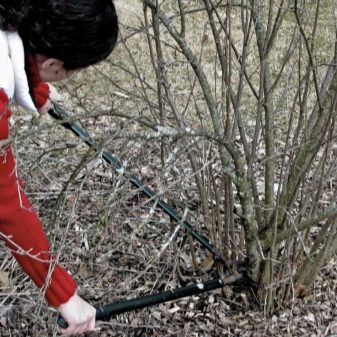
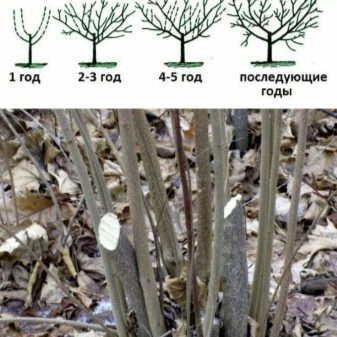
Reproduction
Black chokeberry can be propagated in several ways. For this, you can use seeds, layers or cuttings. In most cases, gardeners resort to the seed method, or to cuttings.
If the seed method is chosen, then the seeds should be planted in October. During the winter season, the planting material will undergo natural sorting and stratification. Already with the arrival of spring, shoots can be expected. For sowing seeds, you need to make holes with a depth of about 2 cm.
When using cuttings, only cuttings from healthy bushes should be used. The length of the workpieces should be between 10 and 15 cm.The lower leaves are immediately removed from them, and the upper ones are shortened. A longitudinal incision is made over each kidney.
The cuttings are placed at the ends in growth stimulants, and then washed, and they can be transplanted to a new place, for example, in a greenhouse.
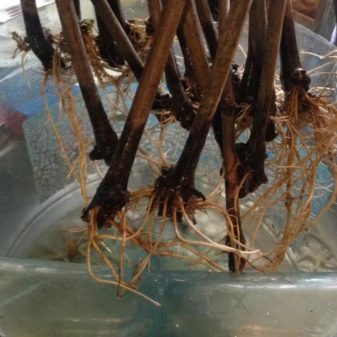
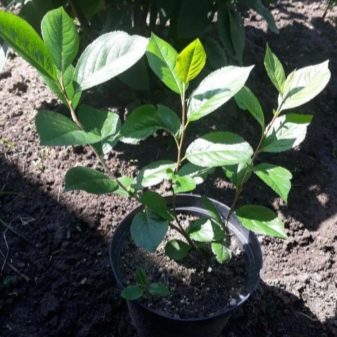
Diseases and pests
Consider what ailments black chokeberry often suffers from.
-
Peripheral rot. Provoked by mushrooms. You can fight the disease with Bordeaux liquid (1%) or other high-quality fungicides. Bushes that are too badly affected must be destroyed. To do this, they must be dug up with the root system, and then burned.
-
Fruit rot. Due to the disease, the berries become very soft and pale, literally mummified. Affected fruits can hang on the branches all winter and spring if not removed. Because of this, young flowers in the ovaries can become infected. To overcome rot, it is necessary to treat the bush with copper oxychloride or Bordeaux liquid.
-
Septoria spotting. This ailment primarily manifests itself on the leaf plates. In the middle of the summer season, light brown oval specks appear with a dark border. In the course of the development of the disease, the tissues inside the spots begin to dry out, become covered with cracks, and then completely fall out. To prevent septoria, it is necessary to turn to treatments with Bordeaux liquid. All fallen leaf blades must be collected and burned. If the disease nevertheless arises, then it is necessary to treat the plant and soil mixture under it with "Abiga-Peak".
-
Grebenshik. A serious illness of a fungal nature. It appears if the planting rhizomes began to rot, which is why the immune system is weakened. The comb manifests itself in the form of thin and leathery plates of a brown-gray or whitish shade. The branches that have been affected by the fungus must be cut and burned.
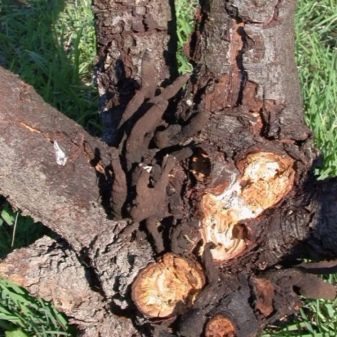
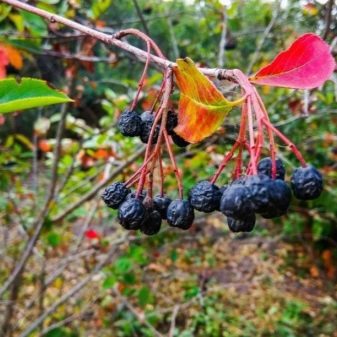
As for pests, the following types of parasites can harm the blackberry.
-
Ticks (apple, red, apple). Tick larvae appear at the end of flowering and in large numbers. They suck all the juices from the foliage by piercing it. You can defeat ticks with the help of the drug "Karbofos" or colloidal sulfur. And also "Kleschevit" will help.
-
Green apple aphid. Another small sucking insect that most often affects young seedlings. It sucks out all the juices from the plant, carries many extremely dangerous diseases. Prevention of the appearance of aphids is carried out with the treatment with Bordeaux liquid or "Karbofos". If the culture is already affected by a pest, then spraying with Metaphos, Ambush, Cyanox preparations will be needed.
-
Hawthorn. Caterpillars of this butterfly can eat up the buds at the moment of their active blooming. After that, they move to the flowers and leaves of the chokeberry. To protect the plant from the attacks of this pest, in early spring (the buds have not yet blossomed), it is necessary to resort to treatments with Bordeaux liquid, "Nitrafen".
Before flowering, it is recommended to spray the crop with Zolone or Chlorophos.
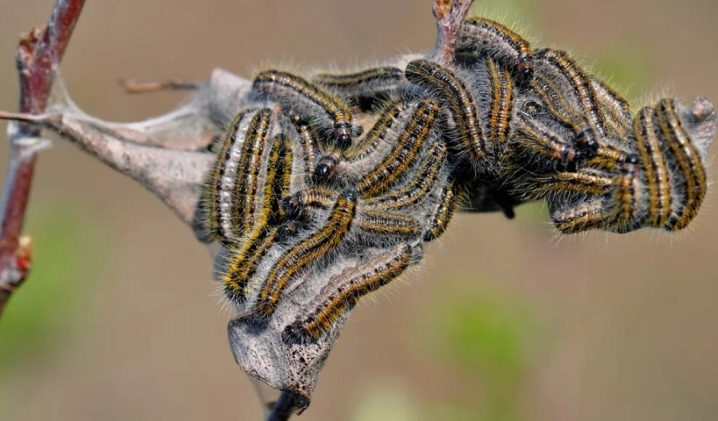
Application in landscape design
Many people decide to grow black chokeberry to decorate the landscape design of their site. So, a beautiful hedge is obtained from the blackberry. Often, rowan bushes are planted around gazebos or recreation areas equipped in the local area. Such elements of landscape design look amazing not only in summer, but also in autumn, attracting attention with their fiery and rich colors.
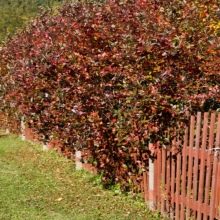

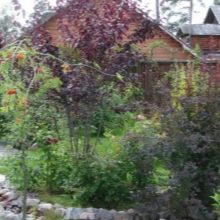





























































The comment was sent successfully.